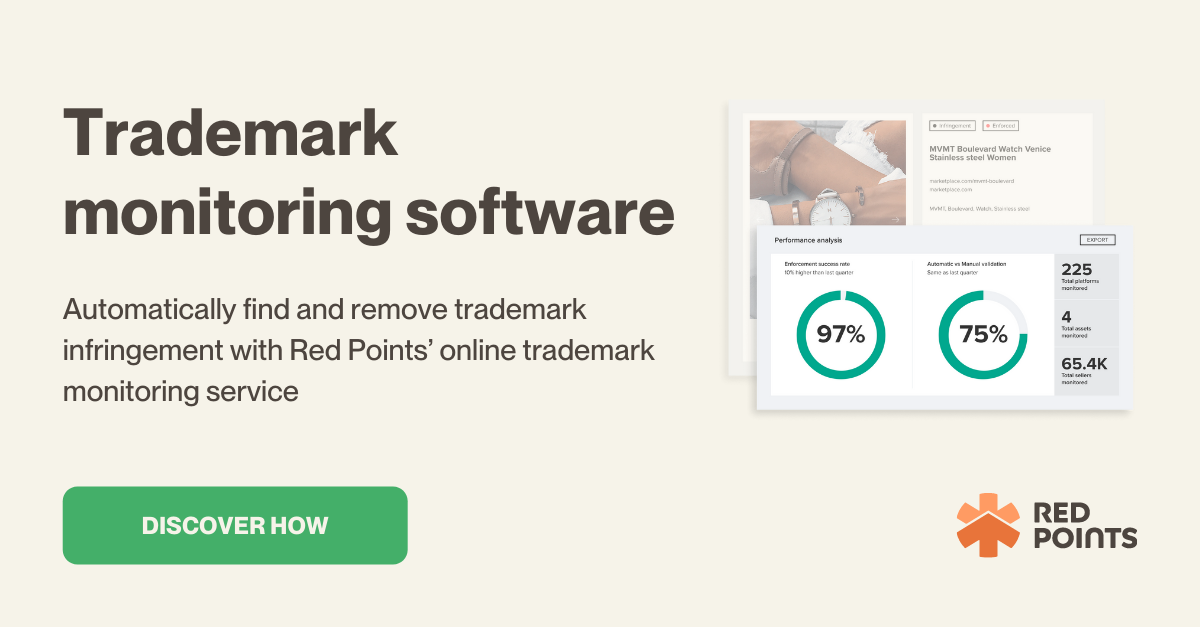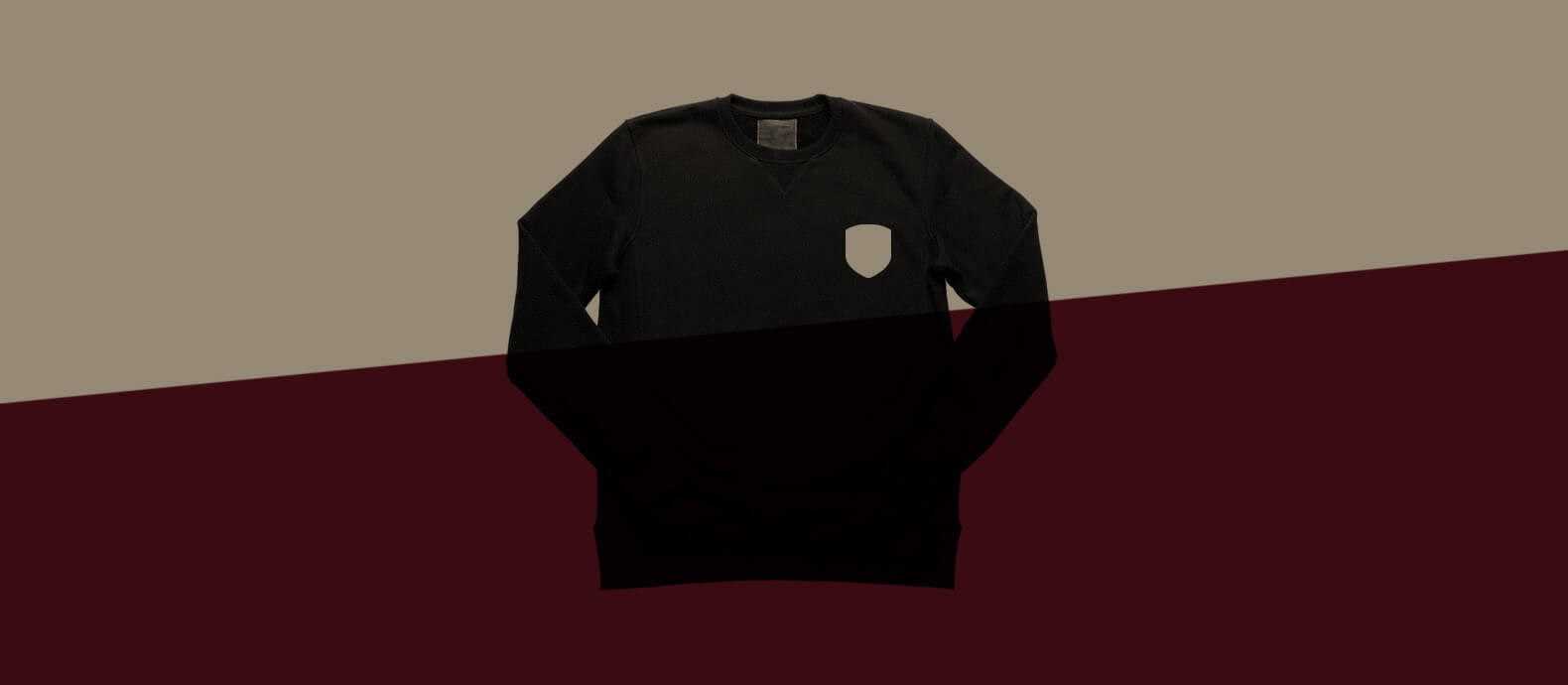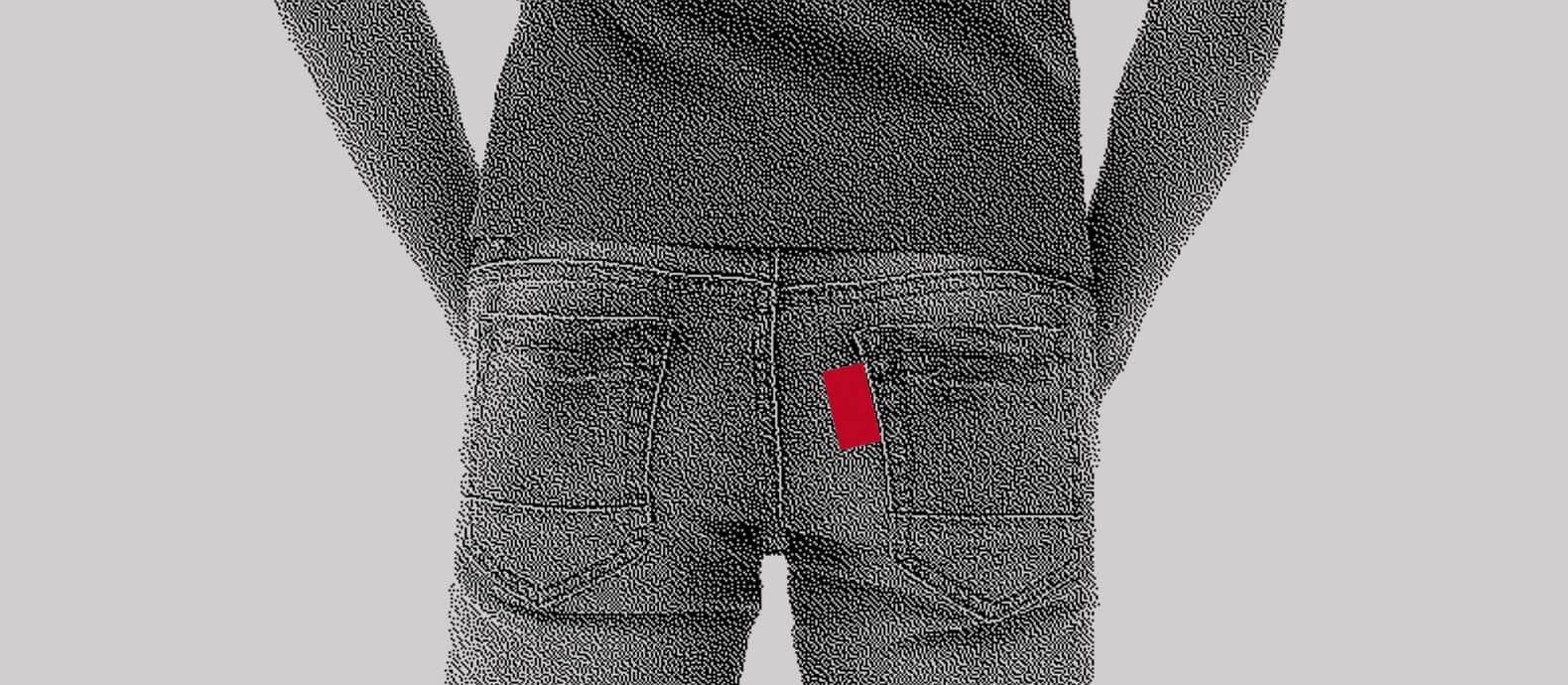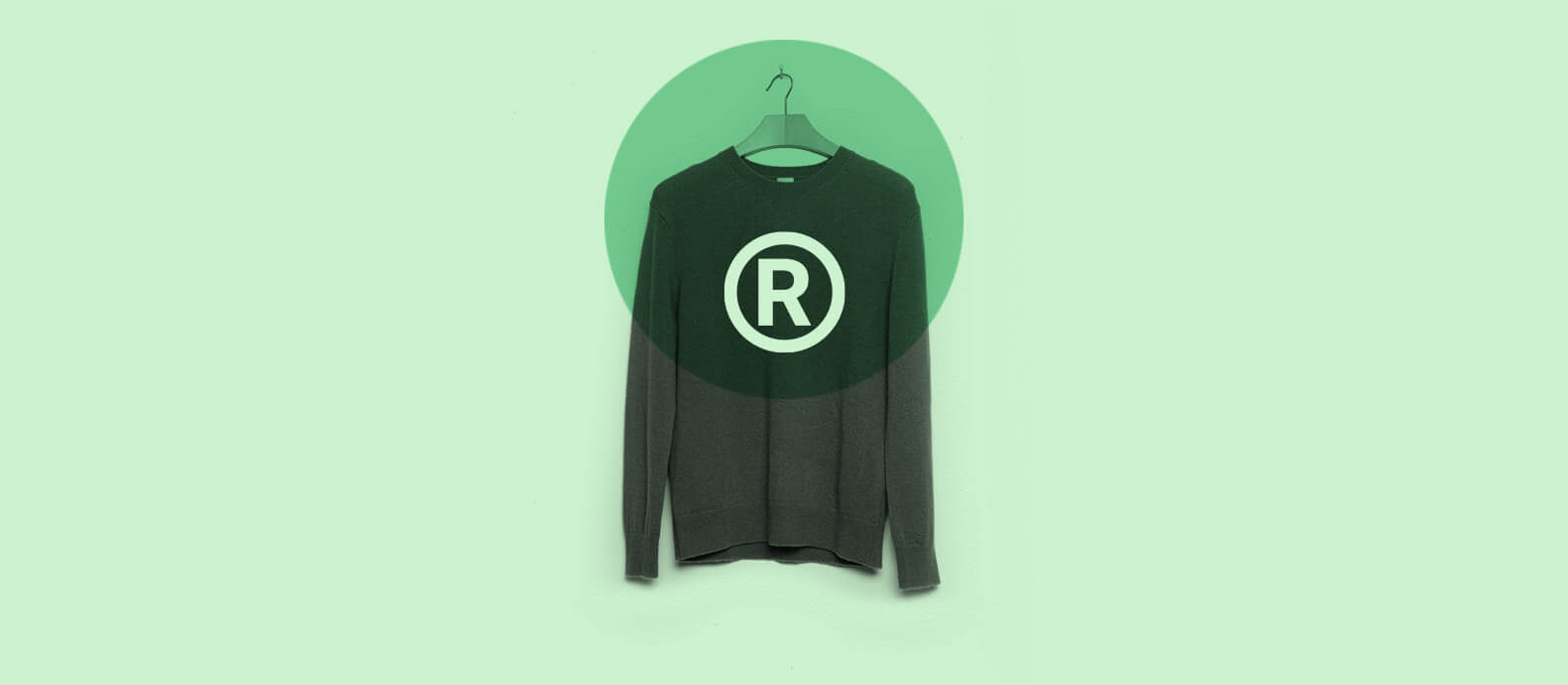The fashion industry lost over $50 billion in just 2020 due to counterfeited products. By the end of 2022, the global counterfeiting industry is expected to reach $4.2 trillion.
Protecting your clothing brand can help you thrive in the highly competitive market where brand identity matters the most. Your brand’s unique identity defines who you are and how you position yourself in terms of your target audience.
All of your efforts of building and marketing your brand can go down the drain if you don’t protect your clothing brand well.
In this article, we discuss:
- The main challenges faced by clothing brands
- How to legally protect your clothing brand
- How Red Points can help
Challenges clothing brands are facing
Counterfeits
As compared to other industries, it’s far easier to create counterfeit clothing products since all you have to do is copy the overall look and put a brand’s name or logo on it. The underlying material is usually of a cheaper quality as the scammers mainly focus on trying to get the clothing design as close to the original as possible.
Customers who are not aware that they are buying a fake product can feel robbed when they discover the quality of the counterfeits.
For instance, Hugo Boss, one of the leading luxury brands, has been struggling with counterfeit sales of their products online especially after the pandemic and government imposed lockdowns. Everyday the brand received complaints from disgruntled customers who had ended up buying counterfeits assuming they were buying authentic products, and now they were upset about the quality.
After adopting the Red Points software, the brand has identified over 17k+ incidents and taken down 6k+ fraud product listings online with an enforcement success rate of almost 93%.
Some of the brands have also started adding barcodes, labels, QR codes, and other identification marks on their products to allow customers to check the authenticity of the products they are buying.
But of course, just educating customers is not enough. If there are counterfeits being actively manufactured to copy your brand’s products, you need to take legal steps to shut down the operation completely.
Unauthorized sellers
Unauthorized sellers tend to buy your products in bulk and then resell your products without your permission.
In many cases, they sell off gray market goods that are sold legally but outside of the brand authorized distribution channels.
When retailers or distributors have excess stock or old stock left, they tend to sell it off at discounted prices during sales. Unauthorized sellers purchase these discounted products in bulk and then sell them off later to make profits.
To customers, unauthorized sellers may seem like authorized dealers, except they can’t offer any warranties and the products. The products may also be fake, old, outdated, and even illegal to be sold in the country.
Many big brands offer products that are priced differently in different countries, unauthorized sellers can use it to their advantage by purchasing products in one country and selling it in another country.
They can harm your business in many ways, including:
- Every product that gets sold through unauthorized sellers is one that you didn’t sell. Unauthorized sellers can undermine your brand’s Minimum Advertised Price (MAP) just to earn more sales
- Unauthorized sellers don’t care about your brand reputation or satisfactory customer service. They only care about making profits. That means these sellers won’t shy away from sending damaged or defective products to customers.
- Frustrated authorized sellers who end up losing business to gray market sellers
- Poor brand reviews from customers who might have purchased gray market products of lower quality or from an outdated stock
It has also been reported that fashion brands are now destroying merchandise worth billions every year just to curb the unauthorized sellers problem, but this isn’t a permanent solution to the problem.
Considering how easy it is to start selling products on eCommerce platforms now, tracking unauthorized sellers can seem challenging, but it’s necessary nonetheless
Brand impersonation
Brand impersonation occurs when bad actors use your brand’s name, logo, media, and other intellectual property to scam customers. By impersonating your brand, the goal is to confuse customers into thinking they are dealing with the brand itself and buying original products.
Impersonation is usually done to sell counterfeit products or to even steal sensitive information from customers, all of which can directly impact your brand in a negative way.
Verified impersonators are present across all the major social media platforms including Facebook, Twitter, Instagram, and TikTok.
According to a 2021 report, Facebook and Instagram combined host over 46,000 active accounts that are run by counterfeiters
Over half of social media brand impersonators use fake coupons or giveaways to attract more customers. One third of impersonators on social media direct unsuspecting customers to phishing pages to steal their social media credentials, personal information, or credit card details.
How to legally protect your clothing brand
To protect your clothing brand, you need to protect the intellectual property of your brand. Here are the most common IPs that can help you legally protect your clothing brand and make sure nobody can copy your signature clothing designs and logos.
Copyright
Copyright gives you the exclusive right to make copies of your creative work, for a limited amount of time. The creative work can be artistic, educational, musical, or literary.
You can copyright an original work of art that is separable from your clothing which can in turn help protect your products. For instance, if you plan to print an original picture on your brand’s t-shirts, you can get that picture copyrighted to ensure no one can copy it.
To clarify, when a part of your clothing, if taken off the clothing article, could meet the copyright protection requirements independently, then it can be protected by copyright.
Clothing and design elements that can be protected by copyright, include:
Sketches: The original sketches of your design can be copyrighted. However, it’s important to note that copyright only protects the original expression of the clothing and not the underlying idea. So, a copyright does not really prevent others from creating designs that are somewhat similar to yours. But they cannot exactly copy your original sketch.
Graphic design: Any kind of two-dimensional designs appearing on clothing including their arrangements, positioning, and combinations, can be copyrighted.
Textile design: Any design imprinted on or in fabric can be copyrighted, as long as they contain sufficient creative expression.
Copyright infringement arises when there is a deliberate or unintentional infringement of someone’s copyright without their consent.
For instance, H&M sued Forever 21 for copyright infringement of a handbag with the text ‘Beach Please’ on it. H&M claimed that Forever 21 infringed on their copyright by creating a copycat cat and also harmed their brand reputation.
Patent
Getting a patent also gives you the legal right to limit the selling and manufacturing of your clothing products, without your permission.
There are two types of patents that you can apply for:
Utility patents: It protects how your product is used or how it works. If you have invented a different functionality or utility for your clothing, it’s ideal to get a utility patent for it.
Design patents: It protects the overall aesthetics of your products, instead of just its utilitarian features.
An example of patents is Diane Von Fürstenberg’s famous wrap dress that was invented in 1974.
Another example is Nike’s patents for FlyKnit technology, which uses reclaimed and recycled materials to create an almost sock-like fit for the shoes. In 2021, Nike filed a lawsuit against Adidas in the US courts claiming that Adidas’s Primeknit shoes were infringing on Nike’s Flyknit patent.
Trademark
A trademark is a type of IP that can include a name, design, sign, or expression which distinguishes it from others. The different aspects of your clothing business that can be trademarked, include:
- Brand name/ Business name
- Name of a product
- Name of a person
- Tagline
- Logo
- Symbols
Your brand’s name, tagline, and logo are the main identifiers of your clothing brand and by trademarking them, you can ensure that nobody is allowed to legally reuse them. It also helps ensure that nobody can misuse or copy your brand’s identifiers without your permission.
The luxury fashion house, Gucci, filed a lawsuit against Guess, the American brand, in 2009 due to their similar logos with the letter ‘G’ and the rhombus pattern that has been synonymous with Gucci’s brand.
Gucci ended up winning the lawsuit in 2012 and sued Guess for over $4.7 million in damages. The luxury Italian brand then continued suing Guess in several other countries. An agreement was finally reached between the two brands in 2018. Although the terms of conditions remain confidential. But it’s easy to ‘guess’ the American apparel brand had to pay a hefty price to stay out of courtrooms.
What’s next?
Protecting your clothing brand’s intellectual property is just the first step. It does not help avoid counterfeits, unauthorized sellers, or brand impersonations. It only gives you the legal tools to shut down any bad actors trying to ride on your brand’s success. You would still have to actively look out for infringements and get them taken down to protect your brand.
Red Point can help you in this otherwise challenging process by automatically monitoring, detecting, and shutting down infringements just as soon as they become live.
See how you can protect your clothing brand with Red Points’ trademark monitoring software.






